The Effects of Weather on Roof Performance - PODCAST TRANSCRIPT
February 8, 2025 at 1:00 p.m.Editor's note: The following is the transcript of a live interview with Phil Mayfield of Mayfield Building Envelope Consultants. You can read the interview below or listen to the podcast.
Heidi J. Ellsworth: Hello and welcome to Contractor Outlook Newscast from the coffee shops. My name is Heidi Ellsworth and we are here today to talk about something that is very important to not only the construction industry but our overall economy and that is the weather. The weather is extreme and so we reached out to our friends at Rackawi to asked them to give us some insights on what they've been finding out through their research and their follow-up after storms on what's really happening with the built environment around extreme weather. So we are so excited to welcome Phil Mayfield to the show. Phil, hello.
Phil Mayfield: How are you doing, Heidi?
Heidi J. Ellsworth: I am very good, I'm very excited to have you here today and to learn more. know, weather is always a topic that everyone likes, we wanna know more about. And with everything that's been going on with the extreme weather, there's a lot to be talked about right now. So let's, before we get, there is, so before we get started, let's start with introductions. So if you could introduce yourself.
Phil Mayfield: It sure is.
Heidi J. Ellsworth: Tell us about your company and what you do with Rackawi.
Phil Mayfield: Okay, my name is Phil Mayfield. I started my own consulting company. I'm a building envelope consultant. I started in 95 after nine years of working for two different roofing manufacturers. I've never been a roofing contractor, but I've worked with plenty of them in the last 38 years. And what my company does, my company's name is Mayfield Building Envelope Consultants or MBEK for short.
What we do is investigate existing buildings, work with architects for new structures and remodels. We work with school systems, all types of roofing, residential, multifamily, commercial, industrial. And a big part of that in the last few years has been performing as a roofing expert in storm damage cases. I've worked both
Heidi J. Ellsworth: Yeah.
Phil Mayfield: For the insurance company side and for building owners and homeowners. And so aside from Rikawi duties, I spent a lot of time looking at storm damage. So it's really a big part of my life. But Rikawi is an organization that I joined, I believe in 2001. It stands for Roofing Industry Committee on Weather Issues.
And I know that's a mouthful, but it's an international organization that first started as the germ of an idea back in 1989 among different building and roofing professionals, including the Department of Energy, Oak Ridge National Labs, SPRI, NRCA, ARMA, Tidal Roofing Institute.
Heidi J. Ellsworth: Wow.
Phil Mayfield: RCI, Factory Mutual, Cedar Shake and Shingle Bureau. There were a number of heavy hitters in the roofing industry that, you know, lot of these people knew each other from different conferences and so forth. And they all had a common goal and wanted to find out why some roofs fail, particularly in hurricane conditions and similar roofs and similar materials did not fail. Right across the street or right next door. And so these talking heads got together and decided, well, you we need an organization that we can get behind that can study these different phenomena and maybe invent a better way of doing things, whether it's design, whether it's manufacturing or whether it's installation methods.
Heidi J. Ellsworth: Yeah, mean, to me that makes so much sense because you really need to be able to see what's working and what's not working and to bring all these organizations together to really start understanding that. And I mean, since 1989, that's a lot of data. And I know you did a lot post Hurricane Andrew and then with everything that came from Dade County. So I would do really interesting. On what have you found in the investigations process over the last year or years, know, over the last decades that really stands out to you, Phil.
Phil Mayfield: Well, you mentioned Hurricane Andrew and that was in 1992 in Florida. And by the time Hurricane Andrew came about, there'd already been two or three strong hurricanes in the 80s that helped germinate this idea of an organization like RECOWE. And so some changes had already started, at least in the talking stages, if not in the stages of code implementation.
Andrew was really the tipping point that it caused so much damage in a relatively short period of time that investigators from insurance companies, pardon me, consultants and contractors were already out looking at damage. Ricali, even though the idea had come about, Ricali was not incorporated. We had our first official meeting in 1990.
That we were not a large enough organization or prepared to do any mobilizations or investigations when Hurricane Andrew came about. Hurricane Andrew really was the big foot on our rear ends that convinced us that, we need to not only talk about this, but to go out and investigate. But getting back to your question, a lot of the things that were learned after Hurricane Andrew
Had to do with EPDMs that would blow off. What kind of ballast, how much ballast, what to do with the seams. Because back then you couldn't glue EPDM seams together and get a real substantial amount of wind uplift resistance. There were other single-plies that had mechanical fastening problems.
That came to light, especially after Hurricane Andrew, as well as shingles, shingle fastening and shingle materials came under the spotlight because there was such devastating damage to so many homes that were covered with shingles at that point. So in the 90s, our first official meeting was in 1990.
Phil Mayfield: Our Rikawi was incorporated in 1996 as a nonprofit, but our first official investigation or mobilization wasn't until 2004. even though in the early days, the founders of Rikawi were only talking about wind damage, there was more and more discussion with the founding members.
To include hail damage to it because when you talk about insurance losses, hail and wind are the two big ones. They dominate the rest of the industry when it comes to significant losses. Now, know recently there's been a lot of discussion about the devastating wildfires in California and elsewhere. So it's not like wind and hail are the only things that cost.
Heidi J. Ellsworth: Yeah.
Phil Mayfield: Cost lives and cost structures and cost insurance companies. But Wind and Hale are still the two big ones. So in 2004, the first actual mobilization by Rikawi was in Oklahoma City. It was a Hale event. And was in April of 2004. And what Rikawi did then and still does on occasion is we invite
Heidi J. Ellsworth: Mm-hmm.
Phil Mayfield: Whatever members want to show up to donate basically a week of vacation time. They're not paid to do that. They pay their own. We pay our own expenses. We're not allowed. This is a key part of our thinking. We're not allowed to advertise our individual businesses or profit in any way. The idea of impartiality is ingrained in Ricali and all its members.
So we show up, we don't have to be on guard that the person that's on our little three or four man team, three or four person team is gonna be on the other side of the table when it comes to storm damage. I'm not gonna see the same people or the same structures because this is a Ricali investigation. It's not meant to benefit me or anybody else.
It frees people to work with people they normally would not work with because maybe they don't trust them. They're not sure if they can talk freely among them. And that's valuable because it gives us opportunities to learn from people that we normally wouldn't work with. As a roof consultant, I'm working with insurance company people. I'm working with code officials. I'm working with Department of Energy or ARMA or SPRY or
Heidi J. Ellsworth: Right.
Phil Mayfield: Academics and that's such a valuable learning tool for me personally as a roofing guy regardless of how helps the industry. I don't know if that answers your question, Heidi.
Heidi J. Ellsworth: Yeah, that's no, it does. I love that. I just find it so interesting. you know, when you're talking about all this data that you've been collecting for so many years, what kind of influences that had? mean, when you bring all that data together, what have you seen change with that with that information from all these different experts coming together? It really makes sense to me because you're bringing the best of the best. To do these investigations and then you have all this great data. So what's happened with it?
Phil Mayfield: Well, Ricali isn't the only organization that has highlighted or discovered failings in materials or design or installation methods, but we're at the leading edge of it, especially when it comes to Wind damage is, I think when most people talk about,
Heidi J. Ellsworth: Yeah.
Phil Mayfield: Wind damage to roofs, they think about, the roof blew off or it didn't blow off or part of it blew off at the edge. Frankly, the most common type of wind related damage that I've seen in multiple hurricane investigations and other investigations involving storm winds is not tear off or blow off as much as it is wind blown projectile impact. And wind blown projectiles are windblown, wind-borne debris, some people call it, is defined as loose objects, either that started out on the roof or that started out elsewhere on the ground or from broken tree branches or from another roof that get blown up into the air and deposited onto another roof. Every time I look at a wind damage situation,
Heidi J. Ellsworth: Okay.
Phil Mayfield: I say every time, almost every time, there are going to be punctures, cuts, gouges, scrapes. In some cases, it's even indentations in a single ply membrane or a mod bit membrane or a shingle that where the membrane itself is not damaged, but the underlying insulation is damaged. And when that happens, what I'm talking about is let's say a two by four gets blown onto a an EPD or a TPO roof. And you can see there's impression left, but the TPO membrane is still in good condition. It hasn't been cut or straight, but you can feel that void. And that void now is deep enough that it catches water. It's not the standing water, an inch wide or two inches wide, as much as the lack of support directly beneath the membrane that I'm concerned about as consultant. Because I think we all know...
Heidi J. Ellsworth: Okay. Yeah.
Phil Mayfield: That when a membrane is not fully supported below the membrane, it's more vulnerable to impact damage, typically from hail, but also from windblown projectiles. And so...
Heidi J. Ellsworth: Right, that's the growth of cover boards.
Phil Mayfield: Yes, exactly. And get back to your question, what's changed in the industry or codes as a result of RECAOI investigations? It's things like where does the roof blow off begin? It usually begins at the perimeter or the ridge or sometimes at projections or penetrations where the membrane's anchored and the membrane starts
Heidi J. Ellsworth: Yeah.
Heidi J. Ellsworth: Mm-hmm.
Phil Mayfield: Getting sucked up and blown down by negative and positive pressures. Well, in our findings, because that's such a common problem, we've seen codes change to require more fasteners around the perimeter, for instance or a different kind of adhesive. With tiles, until the late 80s or early 90s, the tile fasting methods were different. Now foam patties, or a regular thing with tile and they tend to work better. Sealing decks works better. When you have a deck that's fully sealed either by a peel and stick membrane or by sprayed polyurethane foam or some other types of sealant, that prevents blowoffs in a lot of cases. Because a lot of times what happens is the roof blows off because the interior pressure changes inside the building. A window gets blown out, a door gets blown open, a garage door, for instance, gets caved in because of winds or windblown projectiles and the building pressurizes, kind of like blowing up a paper bag. And when you pop it, that's when the roof goes off. So a lot of this is not just roofing related. It's about the whole building envelope. It's susceptible to strong winds that that create roof problems.
Heidi J. Ellsworth: Yeah, that makes a lot of sense. And I can see from what you're saying, because when you're doing your inspections, it's not just flat, it's also steep. So you're doing on steep slope, flat, all roofs, right? Yeah, so I think that makes, people can start seeing what that hell damage does, what the wind damage does.
Phil Mayfield: Yes.
Heidi J. Ellsworth: All those different things as after these huge storms. So this is a little bit of a question outside of this, what, I mean, can you talk a little bit about the climate change trending, not politically, but just we know we're all seeing these storms, the extreme weather. What is that as, mean, are a lot more inspections? How is that really influencing? What Rick Howey's doing with, I mean, there's just a lot more storms than there used to be.
Phil Mayfield: Well, one thing it does is it tends to push us towards trying to find more sponsors because as a not-for-profit organization, we depend completely on the generosity of our sponsors as well as membership fees. But the sponsors are really the driving force behind how many investigations we can afford to conduct each year or every two or three years. In this case, it's been a little over two years since our last investigation, even though we've had some major hurricanes and hailstorms since then. Our criteria are such that even if you've got a really, really tremendous hurricane, it has to hit a certain, it has to hit a populated area with a lot of different kinds of roofs. And with predetermined value of wind speeds. so even though we've had some of the biggest storms around in the last year or two, they've not met our criteria for mobilization. But even if they did, if we don't have the proper funding to mobilize, then we're kind of stuck. We just have to do like you do and the rest of us do, watch it on TV and maybe...
Heidi J. Ellsworth: Huh.
Phil Mayfield: Go on our own a few days or weeks or months later to see how bad the damage is. So get back to your question. The number of investigations that we do is dependent on sponsors. We do them. We haven't missed any that we've slapped ourselves in the head and said, my God, if we just had the sponsorship, we could have investigated that storm. We've had plenty to investigate.
But with the climate change, we have more and more. The last two years have been the two hottest years on record since records have been kept worldwide. And it looks like that's been a key factor and more hurricanes, more hailstorms, more devastating hailstorms, more wildfires. I'm not going to get into the politics of, how much of that is manmade versus natural.
We've had incredible hurricanes and hail storms and wildfires going back 100 years or more. It could be that this is just the luck of the draw that it just happened. But regardless of what you think is contributing to global warming, the sad fact is for a lot of people that it's causing a lot of damage and that's what instigated Bricale is
Heidi J. Ellsworth: Right. Yes.
Phil Mayfield: Looking at damage and trying to figure out how to limit it. In all honesty, we have the technology to build the most storm resistant roofs ever made. What we learned after Hurricane Andrew has not really been improved upon that much. The reason we keep having storm damage, mainly wind more than hail.
Not being able to afford better materials or better designs, or in my opinion, the biggest key is lack of enforcement, code enforcement, as well as and this is something that falls right into the laps of roofers, roofers have a golden opportunity to improve roofs by enforcing,
Workmanship by training the people properly and by hiring supervisors that are going to go out there and make sure that that training does not go to waste, that it's implemented in the field. So roofers have as much control as anybody over improving the roofing industry, but it gets back to that same thing about affordability. How good is it? How much good is it for the average roofer?
Heidi J. Ellsworth: Right.
Phil Mayfield: Who's doing his best, doing everything exactly the way he should, but he's competing against people that aren't doing that. And so many homeowners and building owners are just going after the bottom line. so, roofers have a golden opportunity, but they're also kind of hamstrung by competing against people that aren't doing it the right way.
Heidi J. Ellsworth: Right.
Heidi J. Ellsworth: And it seems like this is why it's so important to have the data that you've collected and to show that, I mean and I'm thinking about really that Fortify system that is out there through the International or the Insurance Institute for Business and Home. That Fortify program really does kind of answer the questions that, know, using the data, finding the right, roofing systems that they know are going to be able to withstand wind and hail and then also being able to really get that out there in a way that contractors can provide that and educate homeowners. Let's talk just a little bit about that, Phil, because that really has been somewhat of a response to all this great data that you've collected.
Phil Mayfield: Well, IBHS is a fine organization backed by numerous insurance companies and they are in lockstep with Recoury, key partners to Recoury when it comes to identifying the problem and then solving the problem. The third step is to get the kind of procedures and materials and design and installation methods identified as part and implemented into the fortify system, get as many of those as to be added to the code requirements as possible. So there's no longer a volunteer effort by conscientious contractors. And that's happening. It started with the Gulf Coast where all the know, where most of wind damage happens. And it's it's slowly moved from
Mississippi and North Carolina, Alabama, Florida. It's moving into the Midwest with Iowa and Oklahoma and Missouri, even up in Connecticut. Some of those states are making inroads with the fortified system adoption by incentivizing it, either with insurance company discounts, which I think is a big thing that I'd like to see more of and funding.
Heidi J. Ellsworth: Yes.
Phil Mayfield: You know, with tax credits or things like that. And just like with electric cars or hybrid vehicles and solar panels, a lot of times when you have a technology or design or an installation method that's more costly, the quickest way to get people to adopt it is to help share the burden with them financially.
Heidi J. Ellsworth: And, you know, I just want to kind of come back to that too, because by helping people either through education or financial incentives, the insurance companies definitely helping with, you know, discounts by putting the right roofs on, we're really saving money and saving lives down the road. Because those roofs are not going to have to be replaced because they can withstand the elements. And you're not going to have as much flying obstacles coming off the roofs that are so, I mean, sometimes that's the most dangerous part of a storm.
Phil Mayfield: Yeah, you're exactly right. But getting back to insurance companies, insurance companies...
Heidi J. Ellsworth: Yeah, and so as... Yeah.
Phil Mayfield: As I'm sure you know, insurance companies are starting to pull out of some states that have the highest degree of natural disasters. And we can't have that. The government can only afford so much as far as bailing companies out, bailing homeowners or building owners out. And so we're going to have to come up with some way of keeping insurance companies involved.
Whether it's, know, whether it's voluntarily, I think we lost our connection, Heidi.
Phil Mayfield: I'm going to try refreshing.
Outro: Okay, I'm gonna close out this one just in case we don't get fill back. But thank you so much. Wow. We learned so much about what's going on with Rikawi, about investigating these storms and what we need to do in the future. So please check out the directories on Rufus Coffee Shop and all the coffee shops for Rikawi and also for the IBHS and the Fortify system. We have all that information online.
Where you can get more information to help you make better decisions and help educate your consumers going forward. Thank you so much for being on today. Please check out all of our Contractor Outlook newscasts under the Read, Watch navigation on all of our sites and check, be sure to subscribe and set those notifications on your favorite podcast channel so you don't miss a single episode. We'll be seeing you next time on Contractor Outlook newscasts.
Recommended For You

S1:E8 Stories From the Roof - PODCAST TRANSCRIPTION
Read More ...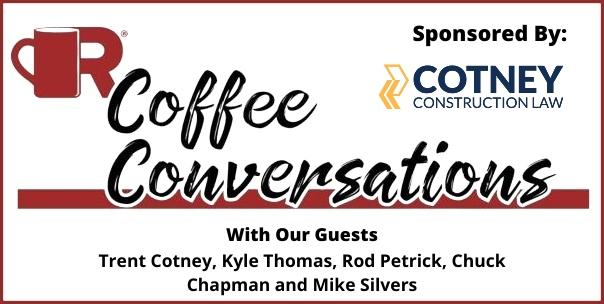
S2:E8 Coffee Conversations - Giving Back in the Roofing Industry Sponsored by Cotney Construction Law - PODCAST TRANSCRIPTION
Read More ...
Duliar Valladares - Habilidades bilingües en techado - Transcripción del Podcast
Read More ...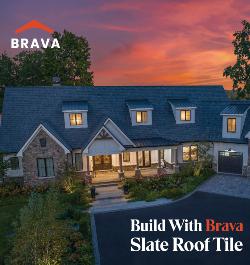

-2025-xtv-mls-tour-2.png)




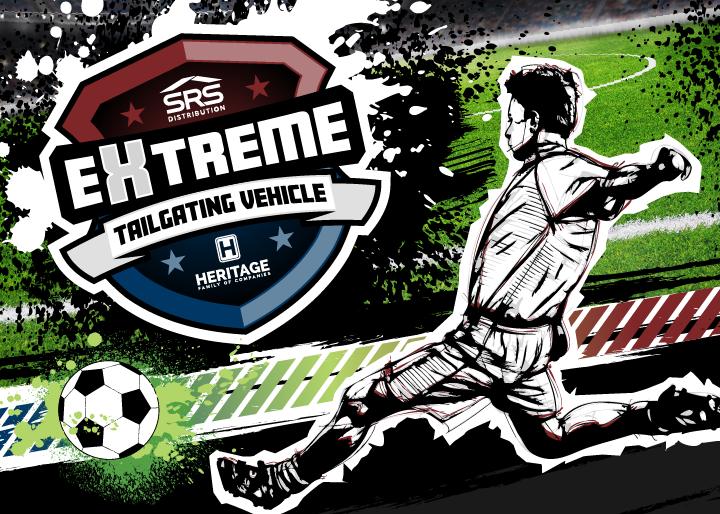
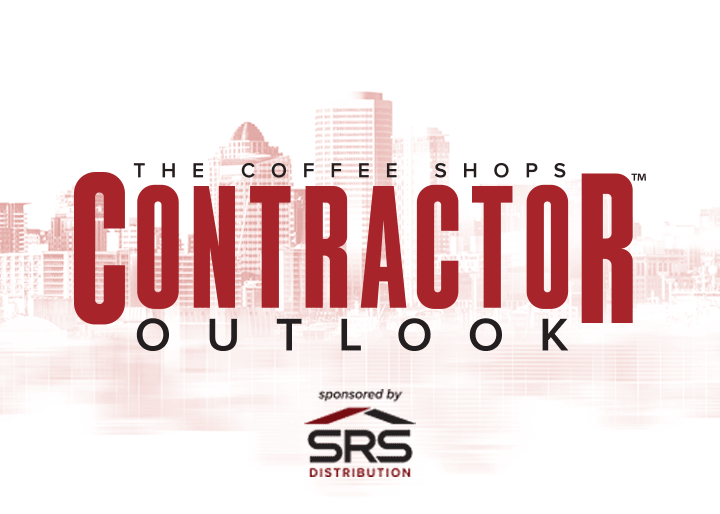

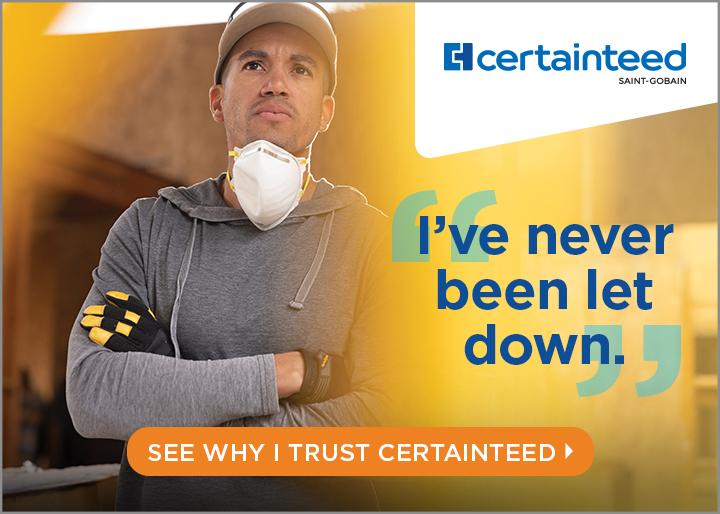
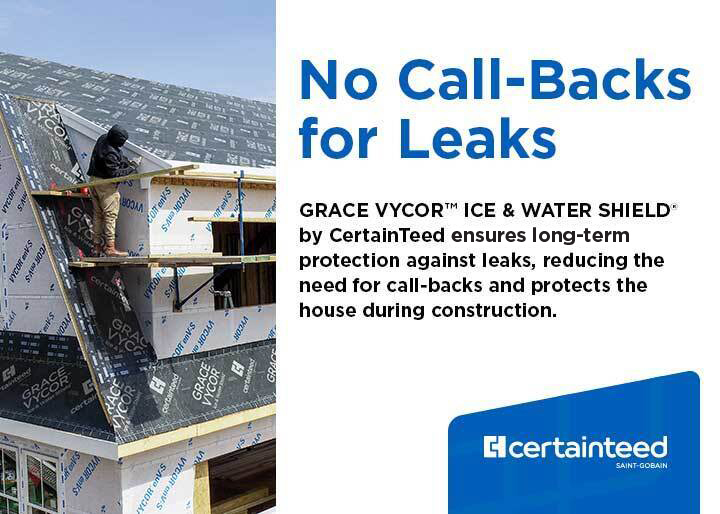









Comments
Leave a Reply
Have an account? Login to leave a comment!
Sign In